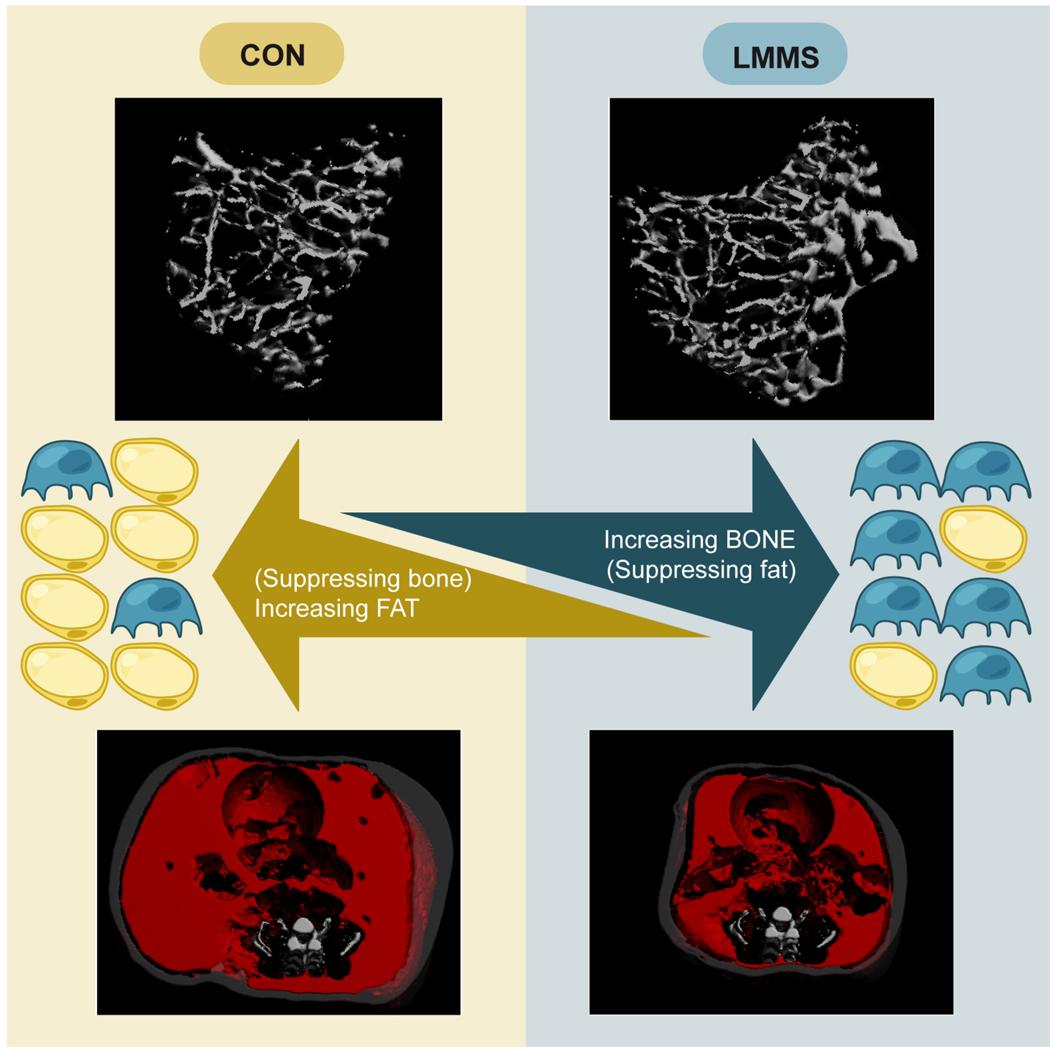Fig. 5.
The ability of LMMS to increase bone while decreasing fat is tied to the common progenitor stem cell from which osteoblasts and adipocytes differentiate. While an inverse relationship between bone and fat tissues has been observed previously, we now show that LMMS increase bone differentiation by decreasing fat differentiation, creating an inverse developmental link between obesity and osteoporosis. Shown in reconstructed µCT images, an LMMS-treated animal (right) is shown in comparison to an age-matched sham CON (left). Light gray represents bone, transparent gray represents subcutaneous fat, red represents visceral fat. Increasing fat in an animal tends to accumulate in the visceral (as opposed to subcutaneous) compartment and increases the circumference of the animal without significant impact to skeletal length.

